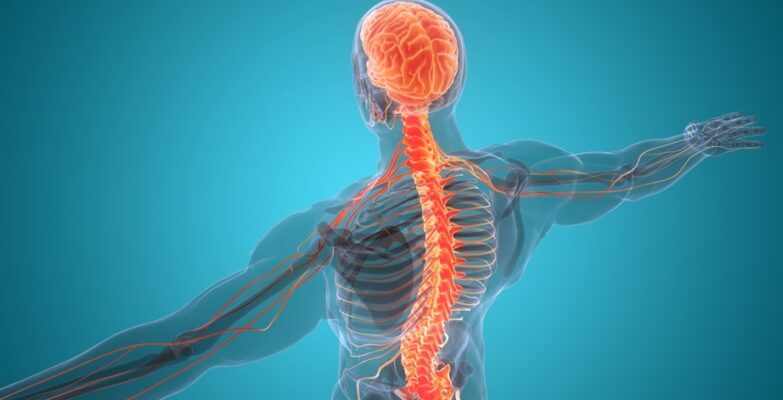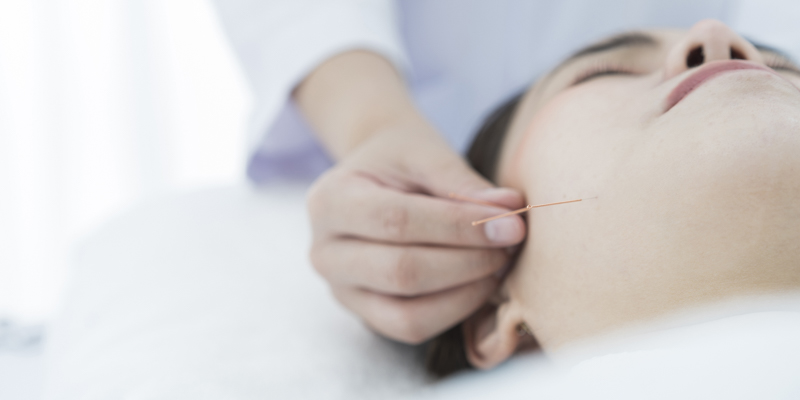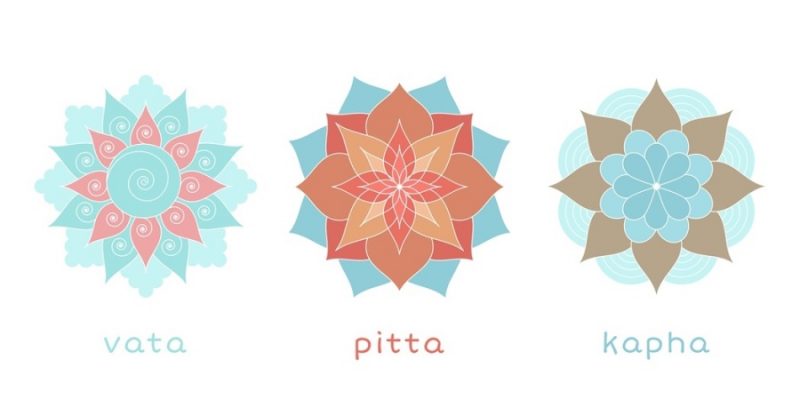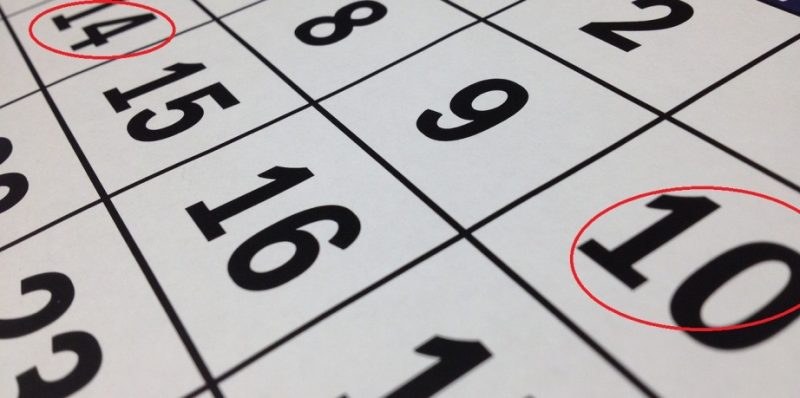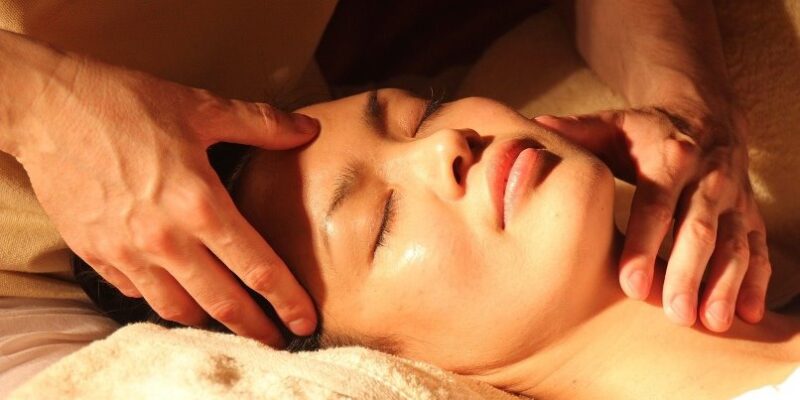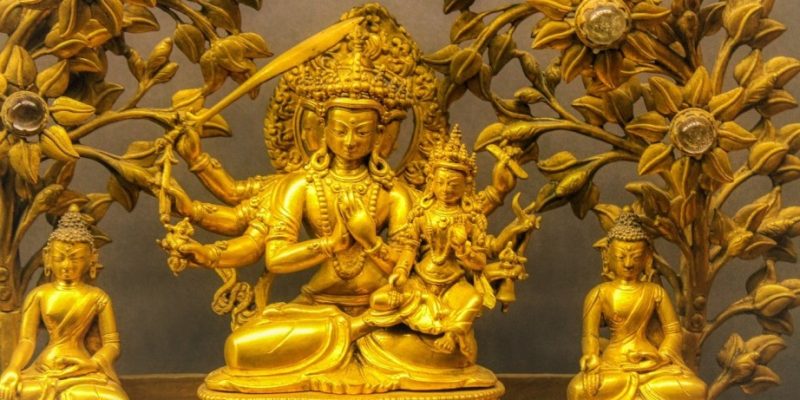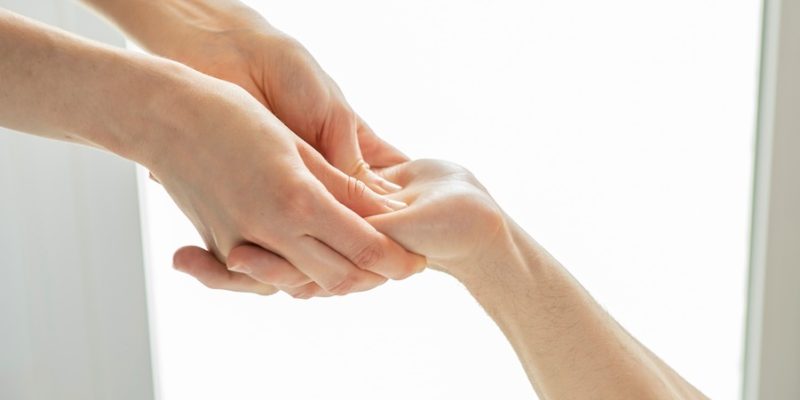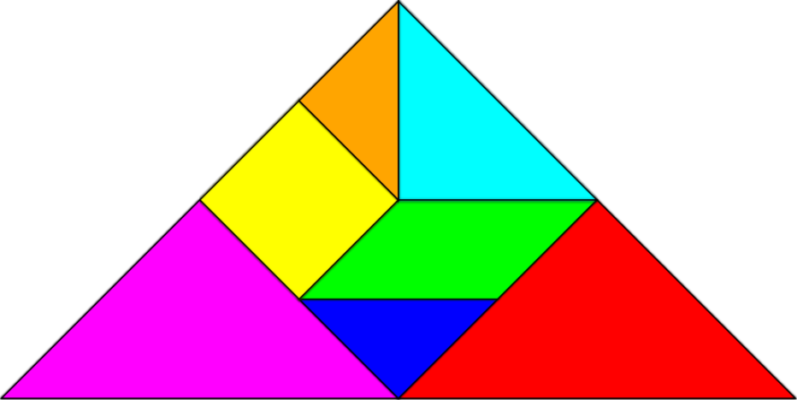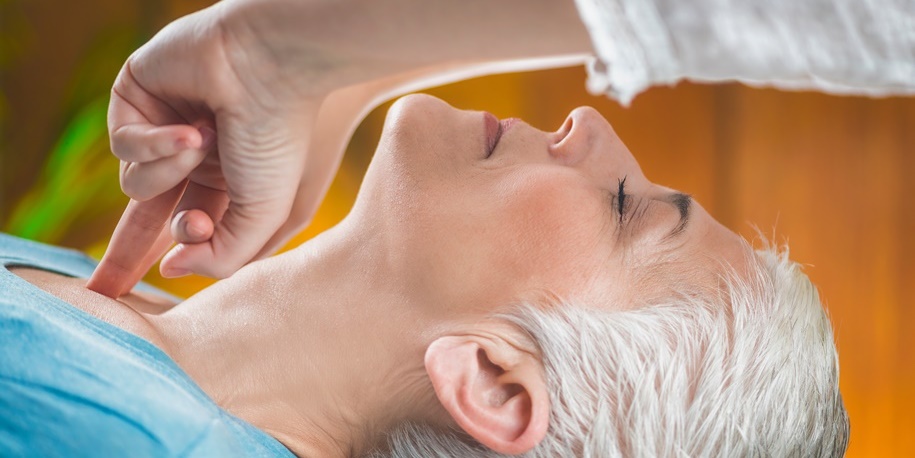
In Ayurvedic Medicine, there’s a general recognition of 107 (or 108) Marma Points (Vital Prana Energy Points), but depending on the classical Ayurveda texts and more contemporary interpretations there are either three or seven Marmas that are considered of most importance.
In both cases — that is, three or seven Marmas — these chief Vital Points are called the Mahamarmas (Maha Marmas or Mahamarmani), which translates as the “great marmas.” Of course, this can bring about some confusion, and in this post we’ll look at both definitions.
The Trimarmas
For instance, the Charaka Samhita text and the Kashyapa Samhita text recognize three principal Marma Points, called the Trimarmas (or Trimarma), being Shirah Marma (Shira, Sira, or Murdha), Basti Marma (Vasti Marma), and Hridaya Marma.

Nevertheless, a closer investigation shows that these Trimarmas are rather “marma regions,” and each region/location consists of several Marma Points. In fact, these three important locations are associated with the head, heart, and abdominal region.
- Shira Marma (Shira or Shiro meaning “head” and Murdha meaning “brain”) is thought to refer to the Marmas located in the head region and brain. In this region, you’ll find, for instance, the Adhipati, Sthapani, Simanta, and Apanga Marmas;
- Basti Marma is located in the lower part of the abdomen in the region of the urinary bladder, and is an actual Marma Point, but the region also includes the Nabhi Marma (Navel Marma), and the Guda Marma, among some other Marmas;
- Hridaya Marma is located in the heart region, and is itself also an independent Marma Point. Other important Marma Points in the region include the Apastambha, Sthanamula, and Brihati Marmas.
Correlation of Seven Marmas and Chakras
In the case of seven great Marmas, they are typically known as Adhipati, Sthapani, Nila/Manya, Hridaya, Nabhi, Basti, and Guda Marma. They are considered to be directly related to the seven principal Chakras, and moreover are thought to influence or control the function of the Chakra Energy Centers.
- Adhipati Marma — located on the top of the skull (fontanel) — controls Sahasrara Chakra (Crown Chakra);
- Sthapani Marma — located between the eyebrows — controls Ajna Chakra (Third Eye);
- Nila (Neela) and Manya Marma — located in the neck — control the Vishuddha Chakra (Throat Chakra);
- Hridaya Marma — located in the heart region — controls the Anahata Chakra (Heart Chakra);
- Nabhi Marma — located between the large and small intestine in the abdominal area — controls the Manipura Chakra (Navel Chakra);
- Basti Marma — located in the lower abdomen — controls the Svadhisthana Chakra (Sacral Chakra);
- Guda Marma — located at the tip of the tailbone — controls the Muladhara Chakra (Root Chakra).
You may have noticed that these seven major Marmas largely correspond with the Marma Points that can be found in the Trimarma classification.
Function of Mahamarmas
As a rule, it’s thought that severe injury of one of the Mahamarmas results in serious disorders, rapid decline of the body, and finally death. Nonetheless, if these Marmas are merely blocked i.e. obstructed they can be worked on (for instance, with massage therapy and acupressure) to increase Prana throughput and alleviate or cure associated health conditions.

If the Mahamarmas cannot be manipulated directly due to moderately severe injury, the Ayurvedic therapist typically tries to work on the Marmas that can be found near and around the injured Marma Point.
As for the Trimarmas, Basti Marmas primarily govern digestive, excretion, sexual, and reproductive functions. The Shira Marmas govern brain and nervous functions, including nose, ears, eyes, mouth and tongue. The Hridaya Marmas mostly relate to the circulatory and respiratory system.
For more details about the functions of the other important Mahamarmas, notably those related to the principal Chakras and major Yoga Nadis, you may read our post Marma Points and Nadi Termination Points | Location, Function, and Correspondence.





